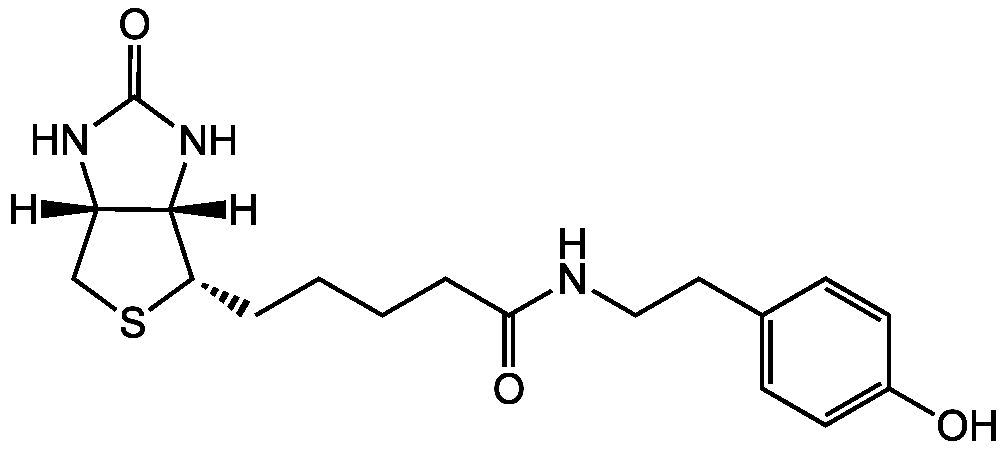
Chemical Structure
Biotinyl tyramide [41994-02-9]

CDX-B0270
Product group Technique Specific Products
Overview
- SupplierChemodex
- Product NameBiotinyl tyramide [41994-02-9]
- Delivery Days Customer10
- CertificationResearch Use Only
- Scientific DescriptionBiotin derivative. Substrate of the horseradish peroxidase enzyme and used as a reagent to amplify immunohistochemical signals. It is based on the HRP-catalyzed deposition of tyramide conjugates (such as biotinyl-tyramide) on a solid phase. Subsequent reaction with streptavidin fluorophore results in the localization of the fluorophore at the site of tyramide deposition. This fluorescence-based tyramide signal amplification (TSA) has been widely used in immunohistochemistry, immunoelectron microscopy, fluorescent in situ hybridization (FISH) and fluorescence ELISA. The TSA method has been reported to increase the detection sensitivity up to 100-fold as compared with conventional avidin-biotinylated enzyme complex procedures. It can be used together with both chromogenic and fluorescence visualization methods. It can be added to any other standard IHC protocol and reduces the use of other reagents; improves signal to noise by reducing the titer of other reagents in the assay protocol and enables multi-target detection in both IHC and (F)ISH applications. - Chemical. CAS: 41994-02-9. Formula: C18H25N3O3S. MW: 363.5. Synthetic. Biotin derivative. Substrate of the horseradish peroxidase enzyme and used as a reagent to amplify immunohistochemical signals. It is based on the HRP-catalyzed deposition of tyramide conjugates (such as biotinyl-tyramide) on a solid phase. Subsequent reaction with streptavidin fluorophore results in the localization of the fluorophore at the site of tyramide deposition. This fluorescence-based tyramide signal amplification (TSA) has been widely used in immunohistochemistry, immunohistochemistry, immunoelectron microscopy, fluorescent in situ hybridization (FISH) and fluorescence ELISA. The TSA method has been reported to increase the detection sensitivity up to 100-fold as compared with conventional avidin-biotinylated enzyme complex procedures. It can be used together with both chromogenic and fluorescence visualization methods. It can be added to any other standard IHC protocol and reduces the use of other reagents; improves signal to noise by reducing the titer of other reagents in the assay protocol and enables multi-target detection in both IHC and (F)ISH applications.
- Storage Instruction2°C to 8°C,-20°C
- UNSPSC41105300
